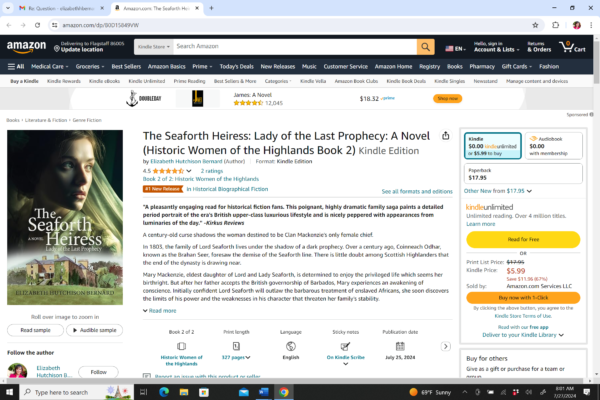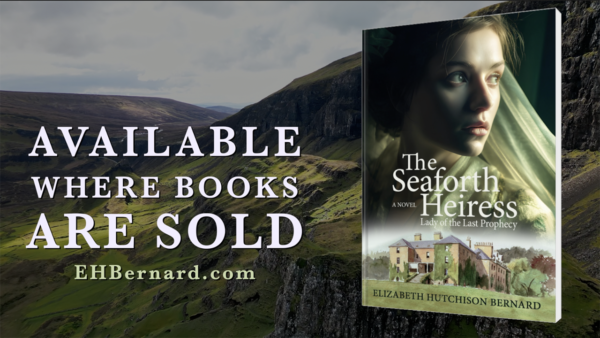The Seaforth Heiress: #1 New Release in Historical Biographical Fiction

I am often asked how I decide on the subjects for my historical novels. I do, of course, think long and hard about each project before I begin. Sometimes I settle on a theme and construct a story around it. In the case of biographical fiction, finding a real person whose life circumstances fascinate me is the starting point for all that follows.
But before I decided on Mary Mackenzie as the central character of my novel The Seaforth Heiress: Lady of the Last Prophecy, I had to discover the Brahan Seer. The Seer, whose real name was Coinneach Odhar, was a Scottish Highlands “prophet” of the seventeenth century who was reputed to have predicted many future historical events. His last prophecy, before he was burned in a spiked barrel of tar as a sorcerer, foresaw the precipitous demise of one of the Highlands’ most important families, the Mackenzies of Seaforth. Their ruin was to occur over a century later. As I learned more about this family, I discovered that the eldest daughter Mary, through no fault of her own, was to play a unique role in the prophet’s forecast of doom.
Mary Elizabeth Fredrica Mackenzie was a charming and intelligent woman, in many ways ahead of her time, and her historical significance goes beyond being the subject of the Seer’s prophecy. She also holds the distinction of being the only woman ever to wear the mantle of Clan Mackenzie chief. The Seaforth Heiress: Lady of the Last Prophecy is Mary’s story.
I found many excellent books both directly and indirectly related to Mary’s life. But the real goldmine was the National Register of Scotland, the repository of a great deal of personal correspondence as well as a travel journal written in her own hand during her extensive journeys through British colonial India. Throughout my research, I was always looking for clues that might indicate how she had felt about the Seer’s dire prophecy, so well-known among Scottish Highlanders. How did it affect her in her early years and then later, as the first predictions of the prophecy seemed to be coming to pass? Was she skeptical or frightened or perhaps ready to do battle with the long-dead prophet?
Writing in Mary’s voice, I tried to put myself in her place as she struggled with the unusual and disturbing circumstances of her fate. Her predicament cannot help but raise eternal questions about the role of destiny in our lives and the struggle to maintain faith in goodness when we witness so much evil in the world. Mary is important, also, because of her determination to claim the mantle of clan chief when others disputed her right to it, simply because she was a woman. I believe that modern readers will find her story poignant and inspiring.
The Seaforth Heiress: Lady of the Last Prophecy is available in paperback, Amazon Kindle, and audiobook.

